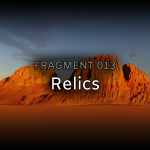February, 2024
now browsing by month
Museum Of Faces

This digital museum, with its ever-changing portraits, offers a unique canvas for exploring the multifaceted nature of human existence, the burdens we carry, and the value we assign to our memories and experiences.
The museum serves as a liminal space, a threshold between the known and the unknown, the conscious and the subconscious. It’s a place of transition, allowing players to explore the depths of their own psyche as they navigate through the shifting gallery of faces. These changing portraits symbolize the fluidity of identity and the impermanence of the self, challenging players to consider their own evolving nature.
Central to the experience is “the weight,” a large cube that significantly slows the player as they progress through the museum, especially as they gather coins—symbols of value, achievement, or perhaps the baggage of material desires. This mechanic poignantly illustrates how our pursuits and the values we attach to them can become burdens, slowing our journey through life. It prompts players to reflect on what truly holds value and what weighs them down, inviting a contemplation of balance between aspiration and contentment.
“Museum of Faces” is more than a game; it’s a metaphor for the journey through life, filled with changing faces, shifting identities, and the constant negotiation between the weight of our desires and the pursuit of meaning. The fragment invites players to ponder the existential questions that define us, urging them to consider the legacy of their choices and the paths they tread in the pursuit of fulfillment.
Relics

Nostalgia plays a powerful role in our relationship with technology. As players interact with this fragment, they are transported back to different points in their personal and collective digital histories. These technologies, once cutting-edge, now serve as reminders of how rapidly innovation reshapes our world. The tactile experience of inserting a disk or a CD, the distinct sounds they make – all contribute to a sense of longing for simpler times, when digital life was more tangible and perhaps more comprehensible.
One of the stark realities highlighted in “Relics” is the impermanence of data. Each form of storage, from magnetic tapes to optical discs, is prone to degradation over time. This data decay is a reminder of the transient nature of digital information. Floppy disks demagnetize, CDs succumb to disc rot, and hard drives fail. These issues pose significant challenges, particularly in preserving important historical and personal data. As technology progresses, the fragment raises questions about the longevity of our current storage methods and the potential loss of significant digital heritage.
Looking to the future, “Relics” encourages us to consider the next evolution in data storage. With the advent of cloud computing and advances in solid-state technology, we are moving towards more reliable, efficient, and expansive storage solutions. However, this shift also raises concerns about data security, privacy, and the increasing complexity of managing vast amounts of information. The trend towards intangible cloud storage also distances us from the physicality of data, changing our relationship with digital content.
“Relics” is more than a game; it’s a reflection on the rapid pace of technological advancement and our relationship with digital tools. It celebrates the nostalgia associated with obsolete technologies while acknowledging the challenges they present. As we move towards more sophisticated storage solutions, it’s important to consider the lessons learned from past technologies – both their strengths and their vulnerabilities. By doing so, we can develop future storage methods that are not only more advanced but also more mindful of the lessons from our digital past.
In essence, “Relics” invites players to embark on a journey through the history of data storage, to reflect on the ephemeral nature of technology, and to ponder the future of our digital lives. It’s a reminder that while technology continues to evolve, our human connection to these ‘relics’ endures, shaping our memories, our history, and our future.
